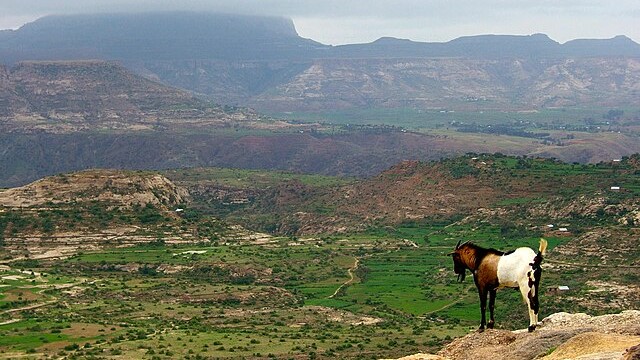The jagged escarpments of the Simien Mountains rise like ancient fortresses from the northern Ethiopian plateau, their sheer cliffs and deep valleys cut by centuries of wind and water. Declared a UNESCO World Heritage site in 1978, this dramatic range has long drawn travelers seeking both physical challenge and a sense of awe in a landscape that seems sculpted for grandeur.
The terrain is formidable. Sharp peaks tower above sweeping ridges, their shadows stretching across plateaus that plunge suddenly into gorges. Ras Dashen, the tallest of them all at 4,550 meters, commands the horizon. The ascent, demanding in both altitude and stamina, rewards those who make the climb with sweeping views across one of Africa’s most remarkable mountain ranges.
But the Simien Mountains are more than a backdrop for ambitious hikers. They are home to a rare cast of wildlife, species that exist almost nowhere else on earth. Gelada baboons, with their lion-like manes and red-chested markings, gather in large troops along the high grasslands. High on the cliffs, the elusive Ethiopian wolf stalks rodents, while lammergeiers—the bearded vultures—circle silently in the thermals above. This is a place where ecosystems unfold in sharp relief, where encounters with the wild feel unmediated and raw.
The plant life carries its own spectacle. Giant lobelias, rising like natural candelabras, punctuate the alpine meadows. In the rainy season, slopes burst into bloom with wildflowers, carpeting the valleys in color. By contrast, the dry months reveal a more austere beauty, the contours of the land standing stark against a sky that often seems impossibly clear.
Human life, too, has been shaped by these heights. The Amhara communities who farm the uplands and graze their livestock across the ridges maintain a rhythm of life little altered by modernity. Encounters with villagers—whether through a shared meal of injera and stew, or the sight of farmers guiding oxen across terraced fields—lend the journey a cultural dimension as enduring as the mountains themselves.
Treks through the region vary widely. Some visitors undertake week-long expeditions across the escarpments, camping under vast night skies. Others opt for shorter day hikes, where local guides, often drawn from nearby villages, interpret the history, geography, and ecological significance of the range. The routes, whether brief or extended, reveal the landscape’s layered complexity.
Conditions on the trail can be unpredictable. Temperatures fluctuate sharply between day and night, and sudden shifts in weather are not uncommon. Preparation, both in equipment and endurance, remains essential. Yet for those who venture into this high-altitude world, the experience is less a test of perseverance than an immersion in one of Africa’s last great mountain wildernesses.
The Simien Mountains stand as both a natural wonder and a cultural landmark, a place where geology, ecology, and human history intersect. In their vastness lies a reminder of the enduring power of landscapes to shape not only the environment but also the imagination.
Sources:
- UNESCO World Heritage Centre. Simien Mountains National Park.
- Ethiopia Wildlife and Natural History Society. Biodiversity of the Ethiopian Highlands.
- Lonely Planet. Ethiopia Travel Guide.
- National Geographic. Simien Mountains: Ethiopia’s Dramatic Highlands.


